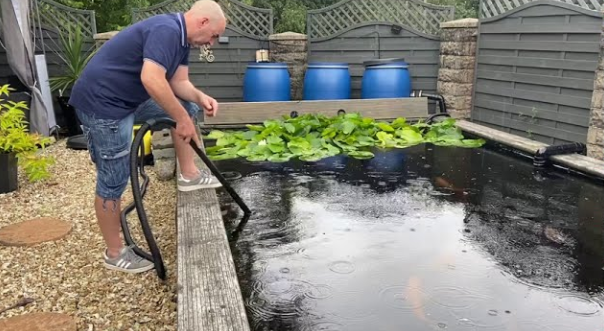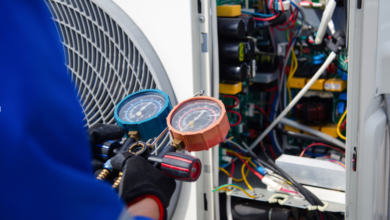Swimming Pond Vacuum: The Modern Way to Keep Your Water Clean and Clear

There’s nothing more relaxing than watching sunlight dance across a clean, clear pond — until sludge, algae, and debris start to build up. If you’ve ever struggled with murky water, foul odors, or stubborn pond waste, you know that cleaning a pond manually can feel like a full-time job. That’s where a swimming pond vacuum comes in. This powerful yet user-friendly tool is designed to remove sludge, sediment, leaves, and debris from the bottom and sides of a pond without draining the water or disturbing aquatic life. With the latest innovations in pond care technology, these vacuums have become more efficient, energy-saving, and easier to use than ever before. Whether you have a natural swimming pond, a koi habitat, or a decorative garden pond, a vacuum can completely transform your maintenance routine.
Why Swimming Pond Vacuums Are Essential for Pond Owners
Traditional pond cleaning methods often involve draining the water, scrubbing surfaces, and refilling — a process that can disrupt the ecosystem and stress your fish and plants. A swimming pond vacuum eliminates most of that hassle. By using suction to remove sediment and organic waste directly from the pond floor, it prevents harmful buildup without requiring you to empty the pond. It also helps reduce nutrients that feed algae, improving water clarity naturally and reducing the need for chemicals. As more people build eco-friendly and swim-safe ponds, vacuums have become an essential tool for regular maintenance and water quality control.
How a Swimming Pond Vacuum Works
While models vary, most swimming pond vacuums share a few common components and functions. The vacuum uses a powerful motor to create suction, drawing water, debris, and sludge into a collection chamber or filter system. Many modern vacuums use dual-chamber designs, which allow for continuous operation — meaning they clean and discharge at the same time, eliminating downtime. The collected debris is separated from the water, which is then filtered and often returned to the pond. This keeps the water level stable while removing the waste that contributes to poor water quality. Some vacuums come with interchangeable nozzles designed for different surfaces, from gravel to liner, and extendable hoses to reach deep areas without disturbing plants or fish.
The Benefits of Using a Swimming Pond Vacuum
Investing in a swimming pond vacuum offers several long-term advantages beyond just cleaner water:
- Time and labor savings: What used to take hours of manual cleaning can now be done in a fraction of the time.
- Improved water quality: By removing sludge and decomposing material, the vacuum helps prevent toxins and excessive nutrient buildup that fuel algae growth.
- Healthier ecosystem: Clean water means healthier fish, stronger plants, and better oxygen levels.
- Reduced reliance on chemicals: With regular vacuuming, you may not need as many water treatments or algaecides.
- Preservation of beneficial bacteria: Because you’re not draining or replacing large amounts of water, beneficial bacteria remain in place, helping to maintain a balanced ecosystem.
- Extended pond life: Removing waste and sediment reduces wear and tear on pumps, filters, and liners.
Features to Look For in a Swimming Pond Vacuum
Not all pond vacuums are created equal. To get the most value, consider the following features before you buy:
- Suction power and depth: For deeper ponds, choose a model that can reach 6–8 feet or more.
- Continuous operation: Dual-chamber systems allow for ongoing cleaning without stopping to empty the vacuum.
- Hose length and attachments: Longer hoses and specialized nozzles make it easier to reach corners, slopes, and under plants.
- Water return system: Models that filter and return water help save resources and reduce disruption.
- Ease of maintenance: Quick-release filters and easy-access chambers simplify cleaning and extend the unit’s lifespan.
- Portability and mobility: Wheels, handles, and lightweight designs make vacuums easier to maneuver, especially around larger ponds.
- Energy efficiency: Look for modern, energy-saving motors that deliver strong suction without excessive power use.
How to Use a Swimming Pond Vacuum Effectively
Even the best vacuum works better with proper technique. Here’s how to get the most out of yours:
- Pre-clean the surface: Skim off leaves, twigs, and larger debris before vacuuming to prevent clogs.
- Work from shallow to deep: Start cleaning near the edges and gradually move toward deeper areas. This helps guide debris toward the vacuum nozzle.
- Move slowly and steadily: Sudden movements can stir up sediment, reducing visibility and efficiency.
- Use the right nozzle: Choose attachments designed for specific surfaces or debris types — wide nozzles for sludge, narrow ones for corners.
- Avoid over-vacuuming: While regular cleaning is beneficial, vacuuming too frequently can disrupt the natural balance. Once or twice a month is sufficient for most ponds.
- Rinse after use: Clean hoses, nozzles, and filters after each session to prevent buildup and prolong the vacuum’s lifespan.
Limitations and Things to Keep in Mind
While a swimming pond vacuum can make maintenance much easier, it’s not a magic solution to every problem. High-end models can be expensive, and budget options may not offer enough power for larger or deeper ponds. Some units require an electrical outlet near the water, so safety precautions are necessary. Additionally, very large debris — like sticks or large stones — may need to be removed manually before vacuuming. Despite these limitations, a good vacuum remains one of the most effective tools for keeping your pond healthy and beautiful.
Seasonal Maintenance Tips with a Pond Vacuum
The best way to keep your pond in top condition is to use your vacuum strategically throughout the year:
- Spring: Remove winter sludge and decomposing leaves before water temperatures rise.
- Summer: Vacuum regularly to control algae and prevent waste from accumulating.
- Autumn: Clear out fallen leaves before they break down into harmful nutrients.
- Winter: Clean the pond before it freezes to minimize debris and protect fish during colder months.
Conclusion: A Cleaner Pond, a Happier Ecosystem
A swimming pond vacuum is one of the most valuable tools you can invest in for long-term pond care. It simplifies maintenance, improves water quality, supports aquatic life, and reduces your reliance on chemicals — all while saving time and effort. Whether you’re maintaining a natural swimming pond, a koi habitat, or a decorative water feature, regular vacuuming helps create a clear, healthy, and beautiful aquatic environment you can enjoy year-round. As pond technology continues to advance, modern vacuums are becoming more powerful, energy-efficient, and user-friendly, making it easier than ever to keep your water sparkling clean.
Frequently Asked Questions
How often should I use a swimming pond vacuum?
Most ponds benefit from vacuuming once or twice a month. However, heavily stocked or debris-prone ponds may require more frequent cleaning.
Can I use a pond vacuum without draining the water?
Yes. One of the biggest advantages of a swimming pond vacuum is that it cleans without draining, preserving your pond’s ecosystem and water levels.
Will a vacuum remove beneficial bacteria from my pond?
No. As long as you’re not replacing large volumes of water, beneficial bacteria living on surfaces and in the filter system remain unaffected.
Is a pond vacuum safe for fish and plants?
Absolutely. When used gently and correctly, a vacuum won’t harm fish or disturb plants. Just move slowly and avoid vacuuming directly where fish are resting.
Are swimming pond vacuums worth the investment?
Yes. They significantly reduce manual labor, improve water quality, and extend the life of your pond equipment, making them well worth the cost for most pond owners.




